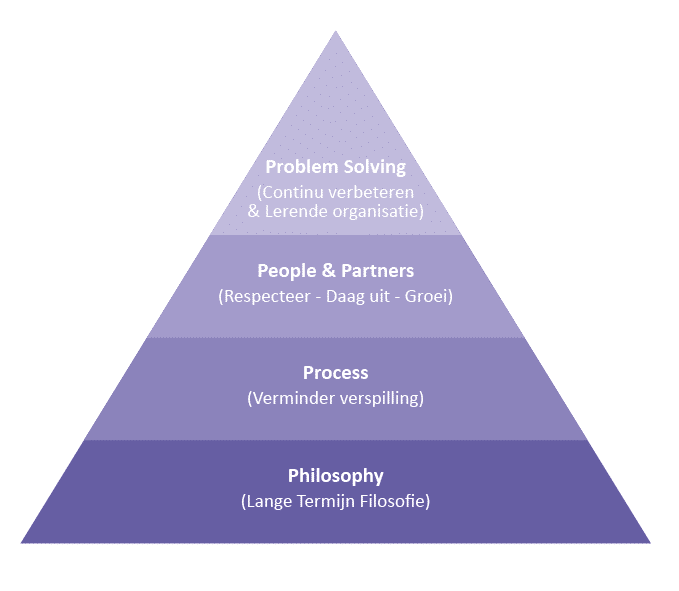Lean Management
Lean Manufacturing has five principles: Customer Value, Value Flow, Flow, Pull and Continuous Improvement. These have been described by Womack, Jones and Roos in two successful Lean books titled “The machine that changed the World” (1990) and “Lean Thinking” (1996).
Both books deal with the revolution in the industry and describe in detail the “Toyota Production System. They compared this way of working with traditional mass production as practiced by other companies in the Western world. They described the following five principles in their book “Lean Thinking,” based on what they had observed at Toyota:
Lean principles:
| Lean principles | Description |
| Value | Define what the value is to the customer |
| Value stream | Name the value stream; Eliminate waste |
| Flow | Create a constant flow |
| Pull | Produce only based on demand |
| Perfection | Continuous improvement |
Our “Climbing the Mountain” series books describe these principles and related techniques in detail. It also describes examples that show how applying these principles and Lean techniques result in shorter lead times and better quality.
Toyota has developed the “Toyota Production System” (TPS). The TPS borrowed ideas from Ford, but then the “Just In Time” philosophy was developed by Toyota to avoid the problems of high inventories. However, the system goes beyond a listing of technical and logistical tools. It also includes principles about vision, collaboration and management. A detailed description of the system and its 14 principles are described in the book “The Toyota Way” (Jeffrey K. Liker, PhD, 2004).

Philosophy:
- Base management decisions on a long-term philosophy, even at the expense of short-term financial goals.
Process:
- Realize a continuous Flow so that problems become visible (Flow).
- Deliver when requested by the customer to avoid overproduction (Pull).
- Ensure an even workload (Heijunka).
- Stop the process in case of quality problems (Jidoka).
- Standardize tasks for continuous improvements.
- Prevent problems through visual management.
- Use only reliable and proven technology.
Employees & Partners:
- Develop leaders who understand the processes and communicate the philosophy (Walk the Talk).
- Respect, develop and challenge employees and teams.
- Help suppliers improve and challenge them.
Continuous improvement:
- Go to the workplace to properly understand problems (Go to Gemba).
- Make decisions carefully based on consensus by weighing all options. Implement decisions quickly thereafter.
- Become a learning organization through incessant reflection (Hansei) and continuous improvement (Kaizen).